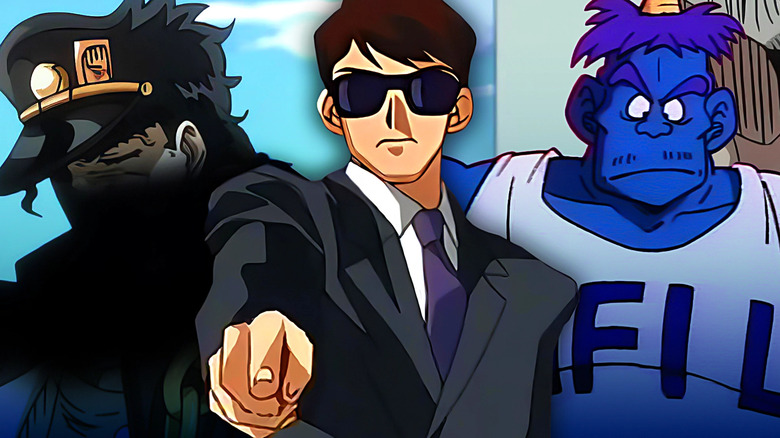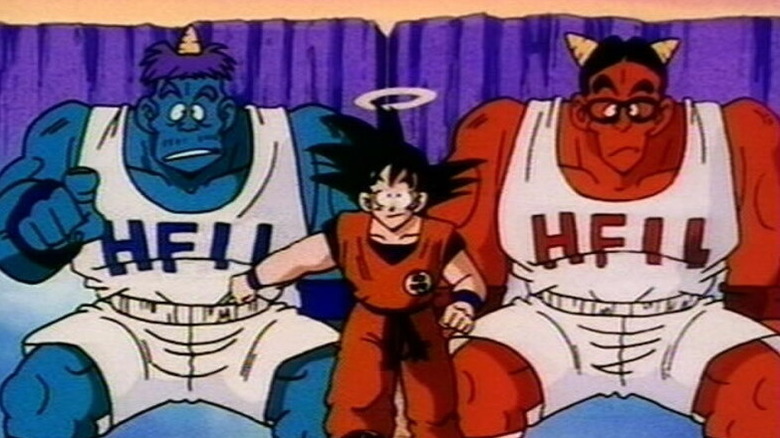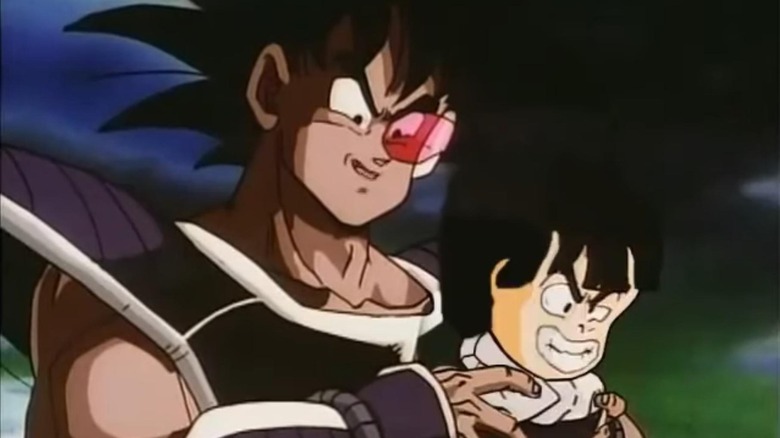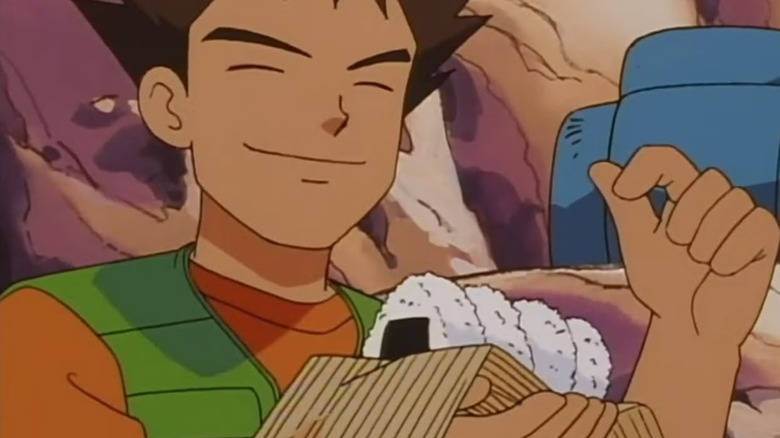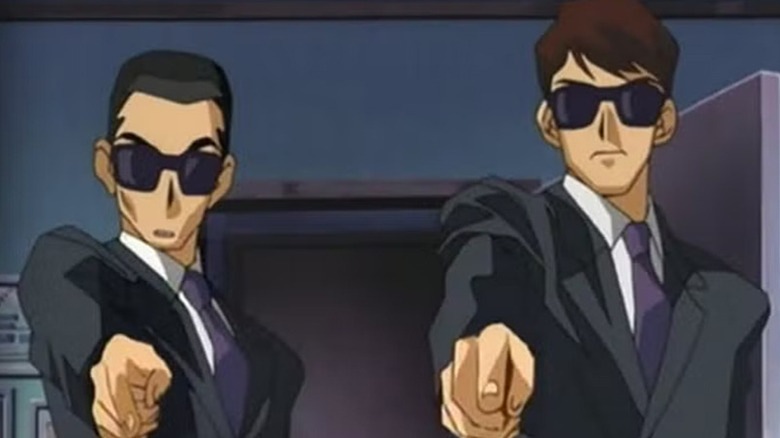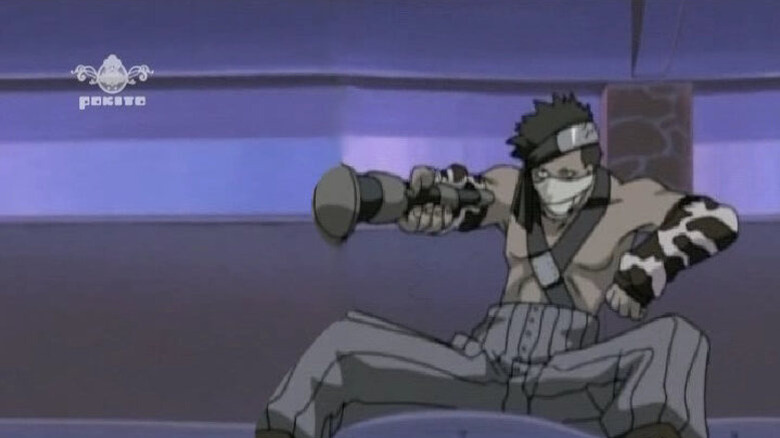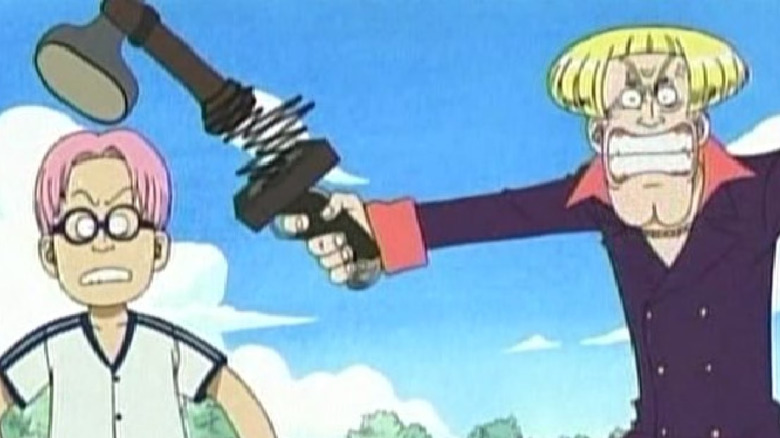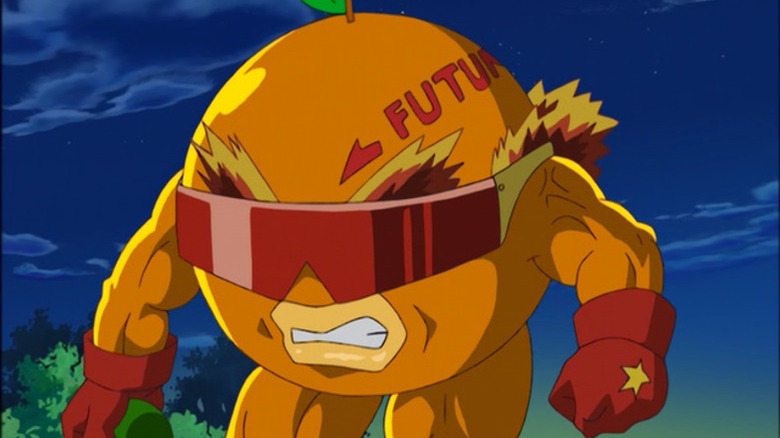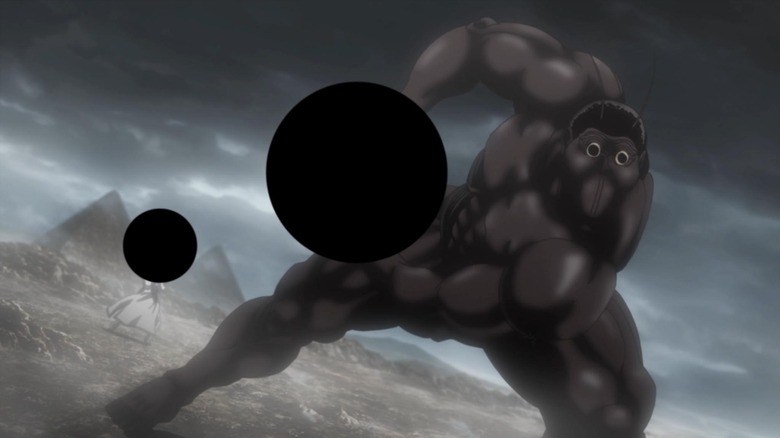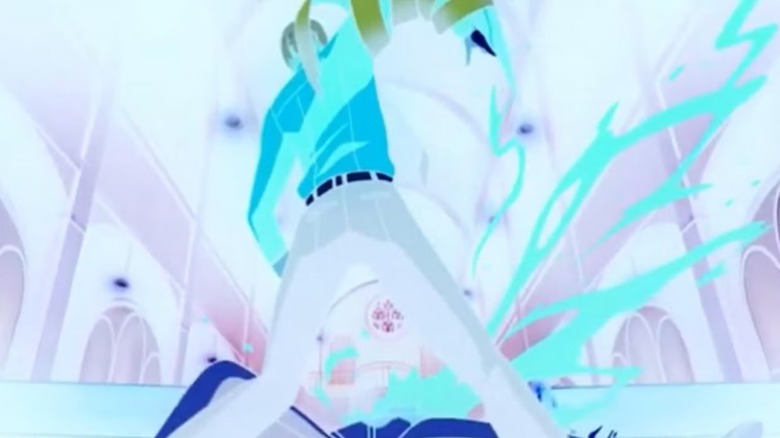12 Moments Of Anime Censorship That Became Bizarrely Hilarious
Content guidelines, in terms of what is permissible to show on television, vary from country to country, and this is especially true of shows intended for younger audiences. For something as diverse as the anime medium, localizing popular series for Western audiences has been far more challenging than simply translating the dialogue. Ever since anime first came to the United States, Japanese animated series and movies have been heavily retooled to match perceived audience sensibilities. This has often resulted in unintentionally hilarious edits, with changes ranging from the laughably tone-deaf to the outright bizarre.
This notorious trend is particularly apparent in localized anime coming to America in the '90s, as the medium really began breaking into the American mainstream. Though many of these infamous edits are from the early localization efforts, comedically awkward censorship continues on into anime's more recent translated productions. Changes made ranged from clumsily trying to avoid depictions of on-screen violence to forced contextual changes to better appeal to young Western viewers.
Here are 12 moments of anime censorship that became bizarrely hilarious in all the unintended ways.
Dragon Ball Z goes to the Home For Infinite Losers
Like many anime of its era, "Dragon Ball Z" had a complicated relationship with how it addressed death, especially given the show's high body count. While deceased characters were claimed to have been sent to the Other World, rather than the afterlife, the clear existence of hell proved trickier to censor. This was compounded by the fact that the muscular ogres guarding hell wore white tank-tops with the word "HELL" clearly and boldly emblazoned on the front in English text. As series protagonist Goku ventured into hell in the series' early episodes, it was decided to turn hell into an inventive acronym.
American censors, with the initial dub by Saban Entertainment, modified HELL to instead read as the innocuous HFIL, with the ogres claiming this acronym stood for Home For Infinite Losers. This sidestepped both the morality and religious implications of Goku visiting hell, while the otherworldly locale still served its broader narrative purpose. Even beyond Goku's first death, hell would occasionally appear throughout "DBZ," with the Ogres wearing the same modified shirts in the censored American version. By the sequel series "Dragon Ball GT," this odd acronym was quietly dropped altogether, while uncensored home video releases of "DBZ" restored hell's good name.
Dragon Ball Z: The Tree of Might introduces a nightmarish Gohan
Even as the spin-off "Dragon Ball Z" anime films began to be localized for basic cable, censorship for its television broadcasts continued. This was particularly apparent in the third "DBZ" movie, "The Tree of Might," which saw Goku and the Z-Fighters take on his villainous doppelganger Turles. Goku's young son Gohan gets in on the action, battling Turles across the course of the movie. However, Turles quickly overpowers the boy and grabs him by the face, forcing him to look into a special light, allowing Gohan to transform into a giant ape.
The sequence of Turles forcibly grabbing Gohan's head and prying his eyes open was deemed too violent for a scene involving a child. For the movie's edited cut, broadcast on television, Turles awkwardly grabs Gohan by the shoulders with a crudely inserted Gohan face superimposed on top of the original image. Only on-screen for an instant, this vision of Gohan looks like a horrifying, grinning mannequin, which is somehow a more traumatizing sight. That this is from "Dragon Ball," a franchise putting children in violent situations since the beginning, is all the more ridiculous.
Sailor Moon turns romance into a questionable family relationship
As far as popularizing the magical girl archetype in Japanese media, few properties are as influential as "Sailor Moon." Adapting Naoko Takeuchi's manga of the same name, the series featured a group of teenagers who could magically transform into cosmic warriors, named after celestial bodies in the solar system. Given its main characters being teenagers, along with anime still finding its place in the United States, "Sailor Moon" was heavily censored for its American localization in 1998. This included downplaying on-screen violence (especially bloodletting), obscuring suggestive shots of characters, removing references to death, and altering non-gender-conforming characters.
In the case of the latter censorship point, Sailors Uranus and Neptune, who are a same-sex couple in the manga and original anime series, were revised. DIC Entertainment and Cloverway Inc, who handled the American dub, changed Uranus and Neptune's relationship to be cousins... really, really close cousins. This made the retained affectionate scenes between Neptune and Uranus all the more confusing for this version of the series. The reboot series "Sailor Moon Crystal" and Viz Media's English dub in 2014 would restore Neptune and Uranus' relationship and remove any presumed familial affiliation between them.
Pokémon tries to rebrand snacks
An absolute global phenomenon that spread from video games to merchandising, card games, and a full-on anime franchise, "Pokémon" was many American viewers' gateway into anime overall. With this in mind, it was still a time when American production companies and networks were determining how to get anime shows they had licensed to appeal to American audiences. It's fair to say that in trying to accomplish this goal, 4Kids Entertainment, who licensed "Pokémon" at the time, may have overstepped with their edits on several occasions. The most heinous example of this was an early episode where Pokémon Trainer Brock makes food for his friends.
In the series' 25th episode, Brock claims he has made jelly donuts, when it's visibly clear that he's just made rice balls instead. To make matters more confusing, 4Kids occasionally identified rice balls correctly, or as cookies or sandwiches, inconsistent in how it wanted to present the snacks to American audiences. After The Pokémon Company began dubbing the "Pokémon" anime themselves for international distribution, it gently poked fun at the infamous 4Kids dub. In this revised dub, Brock cheekily noted that he had a soft spot for jelly donuts while identifying rice balls correctly.
Yu-Gi-Oh! Duel Monsters breaks out the finger guns
"Pokémon" wasn't the only trading card game-linked anime series to get tinkered extensively by 4Kids Entertainment for American audiences. "Yu-Gi-Oh! Duel Monsters" similarly got censored heavily to make the show more family-friendly for younger viewers. References to characters dying was reworded to having their souls sent to the Shadow Realm, while on-screen violence was trimmed. This censorship extended to the depiction of guns in the series, regardless of if the firearms were fired or not.
Whenever guns were pointed at other characters in "Yu-Gi-Oh! Duel Monsters," 4Kids digitally erased the weapons. What remained was the characters' hands awkwardly raised in the same position, making their attempts to intimidate others confusing. Funnier still were the trigger fingers, now stiffly pointing sans any sign of the deadly weapons they were originally holding. As it would with other series' localization licenses it acquired from 4Kids, Funimation would release the uncut version of "Yu-Gi-Oh! Duel Monsters" in 2004.
Naruto erases blades but keeps hilts
The United States is far from the only country that censors anime licensed for television broadcast, with Germany also having strict content guidelines for shows intended for children. This includes strictly handling the depiction of weapons with blades, like swords or knives, which obviously can be tricky for shows involving sword fighters. The long-running anime series "Naruto" was visibly affected by this policy for the show's German localization, and there were several instances when these blade-removing edits became the source of unintentional comedy.
As part of the German channel RTL II's Pokito children's programming slot, prominent blades were digitally removed from "Naruto" broadcasts. However, the hilts were often left in, meaning characters were awkwardly pointing hilts as they threatened each other. When the villainous Zabuza stands on his sword as its blade is partially embedded in a tree, it looks like he's just floating in midair on his hilt. The German broadcast looked like a vision of "Star Wars" where the lightsabers could never be turned on and was just as hilarious as it sounds.
One Piece offers a sweet alternative to cigarettes
The seafaring anime series "One Piece" revolves around pirate crews on the open seas, primarily the Straw Hat Pirates led by protagonist Monkey D. Luffy. Among Luffy's most prominent and closest associates is Sanji, who fancies himself as a sophisticated ladies' man. One of the hallmarks of Sanji's character is that he's a smoker, often seen with a cigarette in hand. This was understandably a no-go for 4Kids Entertainment, who handled the initial English-language dub of "One Piece" in 2004.
4Kids' solution to conceal that a fan-favorite "One Piece" character was a smoker involved some awkward editing. Whenever Sanji is seen visibly holding a cigarette, a red lollipop is superimposed at the lit tip of the cigarette in the 4Kids edit. This detail was omitted after Funimation began handling the localization of "One Piece" in 2007, with Funimation also revising the series' opening episodes that had been revised by 4Kids. But for those early American "One Piece" fans, audiences must have thought that Sanji had a sweet tooth.
One Piece changes Helmeppo's choice in weapons
Sanji's tobacco consumption isn't the only thing in "One Piece" that got tampered with by the 4Kids Entertainment edit of the series. More violent aspects of the pirate series were censored for the initial American broadcast of the series starting in 2004. This includes the use of guns, especially if they were depicted on-screen as being aimed directly at younger, more vulnerable characters. The most laughable instance of this occurred relatively early on, in the third episode of the expansive "One Piece" anime series.
When the arrogant Marine Helmeppo finds Koby defying orders as Luffy fights his father Morgan, he tries to take Koby hostage by pointing a gun at his head. In the 4Kids edit of the scene, Helmeppo's pistol is replaced by a strange contraption resembling a spring-loaded hammer. The device feels more akin to something out of "Looney Tunes" than "One Piece," undercutting any tension in the scene. After Funimation began licensing the series in 2007, Helmeppo no longer armed himself with strange weapons, at least by "One Piece" standards.
Digimon Data Squad
The "Digimon" franchise gives "Pokémon" a run for its money in terms of longevity, but it was also prone to censorship during its international localization. One of the most notable examples was in the 2006 series "Digimon Data Squad," which contained the explosive Digimon BomberNanimon. True to its name, BomberNanimon was shaped and colored like a cartoon black bomb and relied on smaller bombs for its attacks. Disney, which handled the American localization of "Digimon" at the time, gave story editor Jeff Nimoy the choice to either cut BomberNanimon's episode or heavily rework the character.
Nimoy and his team opted for the latter, renaming the Digimon Citramon, after their initial pitch to rename it Tangerinemon was rejected by Toei Animation. To match its new citrus theme, the Digimon was recolored orange and given a leaf next to what was formerly its fuse. In keeping with the rebrand, Citramon wielded bright green energy orbs instead of bombs, with the new attacks presumably infused with Vitamin C. Sadly, Citramon's greatest enemy, at least in its sole episodic appearance in this localization, was not scurvy.
Terra Formars
The 2014 anime series "Terra Formars" is a gory science fiction horror story, based on the manga Yū Sasuga and Kenichi Tachibana. After a failed attempt to terraform Mars involving cockroaches creates humanoid, super-powered evolved cockroaches, the creatures turn their attention to Earth. This leads to a bloody battle for control of the planet as humanity is weakened by a devastating virus that ravages the population. Given its horror elements, "Terra Formars" doesn't pull its punches in terms of on-screen gore, something that needed to be edited for its international broadcasts.
For the gruesome violence against humans in the first five episodes of the series, American censors edited the more graphic bits out. While this change is broadly understandable, the censorship methodology involved simply obscuring the visceral parts on display with obtrusive black dots and bars. This leads to kinetic action sequences suddenly punctuated by the appearance of a large black obstruction on-screen, clumsily hiding just enough of the gore. Though older anime series have employed similar censorship methods, that an anime released as recently as 2014 still does feels both lazy and funny.
JoJo's Bizarre Adventure: Stardust Crusaders
True to its title, "JoJo's Bizarre Adventure" is a strange anime series, featuring over-the-top action and larger-than-life characters as the Joestar family battles the vile Dio Brando. "Stardust Crusaders," the second installment of the "JoJo's Bizarre Adventure" anime, centered on teenage protagonist Jotaro Joestar and his own feud with Dio. Sporting a stylish look, Jotaro often moodily smolders with a cigarette hanging from his mouth. The only problem with Jotaro's tobacco consumption, other than the obvious health risks, is that he was technically an underage smoker at the time.
With Japanese broadcast rules being very strict about the depiction of underage smoking, this led to "Stardust Crusaders" being heavily censored. Whenever Jotaro is seen smoking in the broadcast version of the show while underage, the bottom half of his face is blackened. What makes this hilarious is that the cigarette and smoke are both still quite visible, just now in the shadows. Apparently that was good enough for the censors, making Jotaro's habit just as bizarre as the show's title.
Tokyo Ghoul
With dark fantasy and horror sensibilities, the anime series "Tokyo Ghoul" can appropriately get quite gruesome with its on-screen content at times. The story takes place in a world where ghouls live disguised among humans, eating human flesh to survive and also gaining superhuman abilities from their diet. This premise gives the show a high body count and plenty of bloody gore, which attracted the censors' attention. To avoid showing the more graphic content on-screen for its wider broadcast, censors employed several techniques to edit out the blood and viscera.
For several sequences ,bloody imagery and corpses were either trimmed just out of the frame or kept out of focus to obscure the full extent of what was being shown. More notably, several sequences in "Tokyo Ghoul" would suddenly switch to a photonegative cinematographic style (seen above), making spurting blood appear neon before eventually reverting to normal. What makes this darkly funny is that the violent acts themselves were still kept in, as well as the accompanying cries of pained anguish. In the end, "Tokyo Ghoul" censorship was full of half-measures that were more head-scratching than artfully or effectively done.
